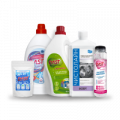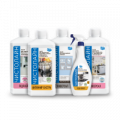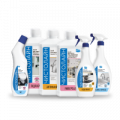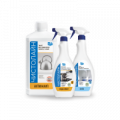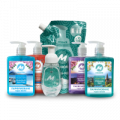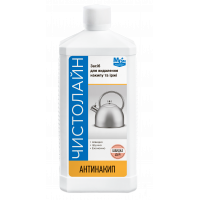How to effectively remove limescale from the kettle? Top remedies for cleaning the kettle
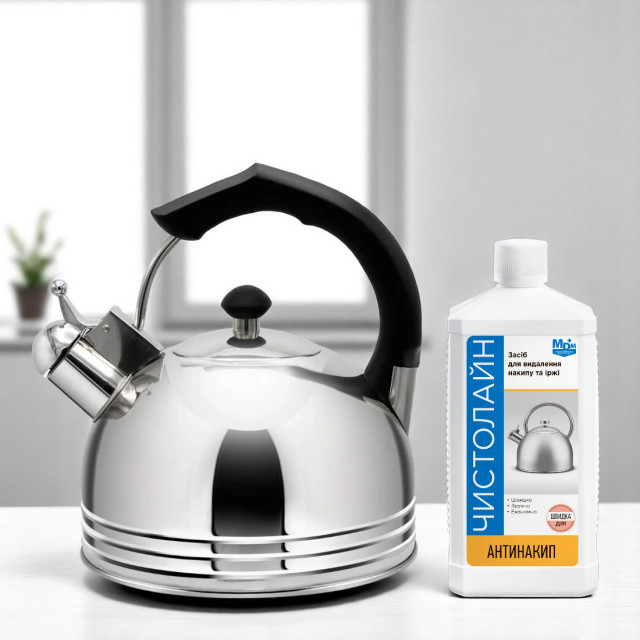
Content
Limescale in a kettle is something almost everyone encounters. It’s not just unattractive — it can also be harmful to your health and damaging to your appliances, leading to surface corrosion and decreased efficiency. Let’s explore why limescale appears, what risks it carries, and how to get rid of it effectively. We’ll review the most popular methods — their pros and cons — and recommend the best product for guaranteed results.
Why Does Limescale Appear? Causes and Consequences
Limescale builds up due to hard water — water that contains high amounts of calcium and magnesium. When water is heated, these minerals settle on the inner surfaces of the kettle, forming a white residue. The harder the water, the faster the buildup. Usage frequency and boiling temperature also affect the speed of limescale formation.
If left untreated, the buildup hardens and can cover the heating element and other internal parts of the kettle. Eventually, flakes may detach and end up in your drinks.
How Limescale Affects Your Health and Appliances
Limescale significantly reduces the efficiency of your kettle and can eventually lead to breakdowns — and such damage is usually not covered under warranty. Worse still, it can affect your health. When calcium and magnesium particles enter the body with water, they may contribute to:
-
Kidney stone formation
-
Calcification (hardening) of blood vessels, which disrupts circulation and impacts the function of internal organs
Limescale also affects the taste of your drinks. That’s why experts recommend regular cleaning.
Home Remedies: Pros and Cons
There are many home remedies for limescale removal. One of the most popular is citric acid. Here’s how to use it:
-
Fill the kettle with water and add 1–2 tablespoons of citric acid
-
Bring to a boil and turn off the kettle
-
Let it sit for 30–60 minutes
-
Rinse the inside thoroughly with clean water
This method works well for regular maintenance but may be ineffective against heavy buildup.
Another widely used remedy is white vinegar. It’s stronger than citric acid but should be used with caution:
-
Mix equal parts vinegar and water
-
Pour the solution into the kettle and bring to a boil
-
Let it sit for 1–2 hours
-
Rinse thoroughly multiple times
Vinegar is effective on stubborn limescale, but it can damage plastic components and its fumes may be harmful. Experts recommend avoiding vinegar, especially when heating it.
What about baking soda?While baking soda helps soften mineral deposits, it doesn’t fully remove them. You can try:
-
Scrubbing surfaces with dry baking soda (risky — it may scratch the interior)
-
Boiling a baking soda solution (2 tablespoons per full kettle), then letting it sit for 30 minutes
This method is safer but less effective against hardened buildup.
Important: never try to scrape off limescale mechanically — this can damage your kettle and cause injury.
The Best Solution for Limescale Removal
Looking for a reliable way to descale your kettle? The best option is a professional cleaner, such as Chistoline Antinakip — a product developed by MDM Group specifically for removing limescale.
It’s easy to use, effective, and safe for health. It removes limescale, lime residue, and rust from stainless steel, glass, ceramic, and plastic surfaces.
How to use it:
-
Apply the product to the affected surface
-
Leave for 3–15 minutes
-
Rinse with water
-
Repeat the procedure for heavy buildup
Chistoline Antinakip is a universal solution that works on all materials and levels of contamination. If your kettle has thick limescale deposits, this product will handle them with ease. For best results, use it regularly for prevention.
How to Prevent Limescale Formation
To avoid limescale buildup, follow these tips:
-
Install a water filter to reduce mineral content
-
Rinse your kettle after each use
-
Clean it with a descaler once a month (more often if the water is very hard)
-
Pour out leftover water after boiling
Following these steps will help extend your kettle’s lifespan and maintain its efficiency.
Home remedies may help with light residue but often fall short when dealing with tough buildup — and in some cases, they can even damage your appliance or affect your health. For reliable, safe, and effective descaling, Chistoline Antinakip is the best choice. It’s suitable for various materials, delivers excellent results, and protects your kettle from future limescale damage.
